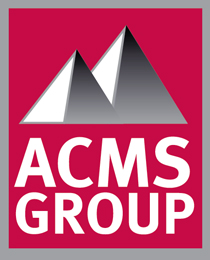Refractory coating is made from refractory materials. These substances and minerals contain high melting points, and they are difficult to fuse with other materials unless you subject them to extremely high temperatures. Basically, they maintain their properties under most circumstances, and that’s why they create ideal coatings for applications involving heat, such as kilns and furnaces. Here’s a basic overview of refractory coatings and their advantages.
Attributes of refractory materials
As indicated above, refractory materials should resist high temperatures—otherwise you completely defeat the purpose of using them. Their unique attributes create this resistance and help them perform demanding functions.
Materials in refractory coatings should not contain volatile elements that produce gas when heated. They should be compatible with new chemical binders and remain chemically inert when applied to molten metal. Refractory materials need to be suitable for their application in terms of shape, particle size and particle size distribution and remain consistent in pH and purity.
When applied to a metal core or mold, materials should offer adequate adhesion and be the right mix of minerals to cope with the metal being poured. Coatings should dry quickly and never blister, crack, scale or peel. The materials should have good coverage and remain stable when items are in storage, even in extreme ambient temperatures. In addition, the materials must provide good protection against metal penetration, minimize core degradation, offer good remixing properties and level well. Contaminating the coatings can compromise their heat resistance.
To meet these attributes, all refractory materials should consist of refractory filler, suspension agents, binder agents and liquid carriers. The proportions of filler and agents depend on the application of the refractory coating.
Advantages
Refractory coatings can be chemically complex and require specialized techniques to apply. However, they offer unique advantages for their applications.
When you use refractory coatings, you enjoy reduced waste and lower cleaning costs. These coatings are also capable of producing smoother surface finishes that eliminate (or at least reduce) metal penetration. You will not experience “burn on” with most applications, or you will at least experience it less often. Refractory coatings are also not subject to erosion of sand by molten metal.
This is why refractory coatings are so useful in applications involving high heat. You will find them used for kilns and furnaces. At ACMS Group, one of our products, refractory shotcrete, can handle temperatures up to 3,000 degrees Fahrenheit.
We also offer self-performing refractory, which works well for brick kilns, ladles, vessels, furnaces and other high-stress applications. Our staff offers experience in steel, aluminum, cement, power, chemical and foundry projects. This shows the flexible use of refractory coatings, as well as the skills and knowledge of our professionals when it comes to applying them.
If you require refractory coating tips or wish to start a project involving refractory coatings, look no further than the experts ACMS Group. We also offer 24-hour emergency repairs. Reach out to us today if you require assistance or are interested in learning more about our capabilities.
